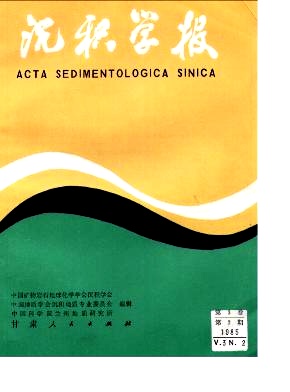TRACE FOSSILS AND THEIR SEDIMENTARY ENVIRONMENTS IN THE UPPER PERMIAN AND DEVONIAN OF SANGLANG AREA, SOUTHERN GUIZHOU
- Received Date: 1983-11-24
- Publish Date: 1985-06-10
Abstract: There are more abundant trace fossils in the Upper Permian and Huohong and Caihua formations of the Middle and Upper Devonian of Sanglang area, Southern Guizhou. They amount to 7 genus and 10 species, of which 2 genus and 4 species are new. There are Chondrites sp.,Helminthopsis sp., Planolites malinggangensis (sp.nov.), Paraachomatichnus malinggangonsis ( gen.nov., sp. nov. ) and Glockeria ? sp. in the Upper Permian. There are Glockeria ? sp., Cosmorhaphe sp., Lumbrichnus sanglan-gensis ( gen.nov., sp.nov.,) and L. sp. ia the Huohong formation of the Middle Devonian. There is Planolites sanglangensis ( sp.nov. ) in the Daihua Formation of the Upper Devonian. The Upper Permian rocks are mainly tuff, tuffaceous limestone, limestone and rudstone -with graded beds and Bouma incomplete sequence. They contain not only the deep-water organisms,such as radiolaria and siliceous sponge spicules, but also the shallow-water organisms.The trace fossils are similar to those of the assemblage of bathyal-abyssal environment trace fossils, which shows that the Upper Permian deposits should mainly be volcaniclastic turbidite with the carbonatite gravity flow deposits. Huohong Formation is rhythmic deposits corresponding to the d, e parts or b, c, d, e parts of Bouma sequence. They have also the flute cast and the load cast. The organisms are mostly the tentaculitids of plankton. The trace fossils are also similar to those of tne assemblage of bathyal-abyssal environment trace fossils. Therefore, the diposits of Huohong Formation should mainly be distal turbidites. Daihua Formation of the Upper Devonian is stripped limestone with radiolaria. Therefore, the Daihua Formation should be the deep-water gravity flow deposits.
| Citation: | He Yuanbi, Gao Weidong, Zhang Tingshan. TRACE FOSSILS AND THEIR SEDIMENTARY ENVIRONMENTS IN THE UPPER PERMIAN AND DEVONIAN OF SANGLANG AREA, SOUTHERN GUIZHOU[J]. Acta Sedimentologica Sinica, 1985, 3(2): 75-84. |






 DownLoad:
DownLoad: